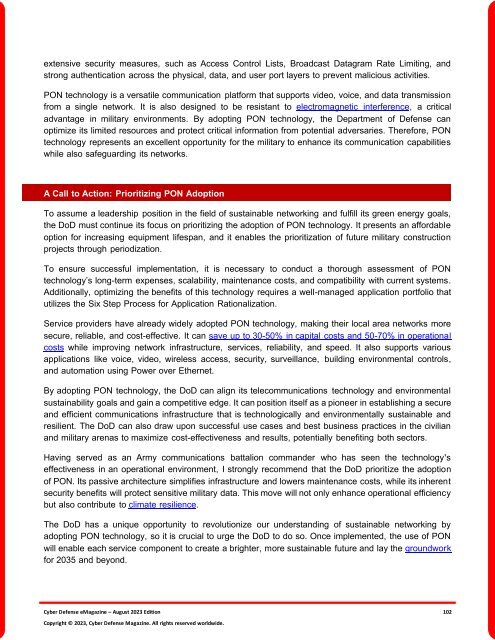The Cyber Defense eMagazine August Edition for 2023
Cyber Defense eMagazine August Edition for 2023 #CDM #CYBERDEFENSEMAG @CyberDefenseMag by @Miliefsky a world-renowned cyber security expert and the Publisher of Cyber Defense Magazine as part of the Cyber Defense Media Group as well as Yan Ross, Editor-in-Chief and many more writers, partners and supporters who make this an awesome publication! Thank you all and to our readers! OSINT ROCKS! #CDM #CDMG #OSINT #CYBERSECURITY #INFOSEC #BEST #PRACTICES #TIPS #TECHNIQUES
Cyber Defense eMagazine August Edition for 2023 #CDM #CYBERDEFENSEMAG @CyberDefenseMag by @Miliefsky a world-renowned cyber security expert and the Publisher of Cyber Defense Magazine as part of the Cyber Defense Media Group as well as Yan Ross, Editor-in-Chief and many more writers, partners and supporters who make this an awesome publication! Thank you all and to our readers! OSINT ROCKS! #CDM #CDMG #OSINT #CYBERSECURITY #INFOSEC #BEST #PRACTICES #TIPS #TECHNIQUES
Create successful ePaper yourself
Turn your PDF publications into a flip-book with our unique Google optimized e-Paper software.
extensive security measures, such as Access Control Lists, Broadcast Datagram Rate Limiting, and<br />
strong authentication across the physical, data, and user port layers to prevent malicious activities.<br />
PON technology is a versatile communication plat<strong>for</strong>m that supports video, voice, and data transmission<br />
from a single network. It is also designed to be resistant to electromagnetic interference, a critical<br />
advantage in military environments. By adopting PON technology, the Department of <strong>Defense</strong> can<br />
optimize its limited resources and protect critical in<strong>for</strong>mation from potential adversaries. <strong>The</strong>re<strong>for</strong>e, PON<br />
technology represents an excellent opportunity <strong>for</strong> the military to enhance its communication capabilities<br />
while also safeguarding its networks.<br />
A Call to Action: Prioritizing PON Adoption<br />
To assume a leadership position in the field of sustainable networking and fulfill its green energy goals,<br />
the DoD must continue its focus on prioritizing the adoption of PON technology. It presents an af<strong>for</strong>dable<br />
option <strong>for</strong> increasing equipment lifespan, and it enables the prioritization of future military construction<br />
projects through periodization.<br />
To ensure successful implementation, it is necessary to conduct a thorough assessment of PON<br />
technology’s long-term expenses, scalability, maintenance costs, and compatibility with current systems.<br />
Additionally, optimizing the benefits of this technology requires a well-managed application portfolio that<br />
utilizes the Six Step Process <strong>for</strong> Application Rationalization.<br />
Service providers have already widely adopted PON technology, making their local area networks more<br />
secure, reliable, and cost-effective. It can save up to 30-50% in capital costs and 50-70% in operational<br />
costs while improving network infrastructure, services, reliability, and speed. It also supports various<br />
applications like voice, video, wireless access, security, surveillance, building environmental controls,<br />
and automation using Power over Ethernet.<br />
By adopting PON technology, the DoD can align its telecommunications technology and environmental<br />
sustainability goals and gain a competitive edge. It can position itself as a pioneer in establishing a secure<br />
and efficient communications infrastructure that is technologically and environmentally sustainable and<br />
resilient. <strong>The</strong> DoD can also draw upon successful use cases and best business practices in the civilian<br />
and military arenas to maximize cost-effectiveness and results, potentially benefiting both sectors.<br />
Having served as an Army communications battalion commander who has seen the technology's<br />
effectiveness in an operational environment, I strongly recommend that the DoD prioritize the adoption<br />
of PON. Its passive architecture simplifies infrastructure and lowers maintenance costs, while its inherent<br />
security benefits will protect sensitive military data. This move will not only enhance operational efficiency<br />
but also contribute to climate resilience.<br />
<strong>The</strong> DoD has a unique opportunity to revolutionize our understanding of sustainable networking by<br />
adopting PON technology, so it is crucial to urge the DoD to do so. Once implemented, the use of PON<br />
will enable each service component to create a brighter, more sustainable future and lay the groundwork<br />
<strong>for</strong> 2035 and beyond.<br />
<strong>Cyber</strong> <strong>Defense</strong> <strong>eMagazine</strong> – <strong>August</strong> <strong>2023</strong> <strong>Edition</strong> 102<br />
Copyright © <strong>2023</strong>, <strong>Cyber</strong> <strong>Defense</strong> Magazine. All rights reserved worldwide.

















